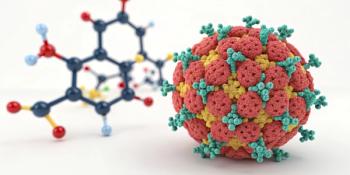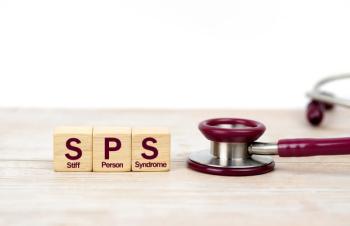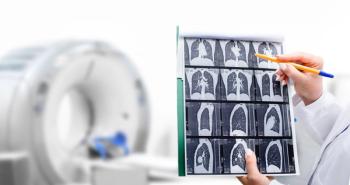
HIV Patients Have Worse COVID-19 Outcomes than Counterparts
The findings suggest patients with HIV should be recategorized to "increased risk" when looking at COVID-19 underlying medical conditions.
Patients with HIV experience worse COVID-19-related outcomes compared to those without the diagnosis, according to new findings.
The findings demonstrated those with HIV had higher rates of severe disease requiring hospitalization relative to patients without HIV, suggesting patients with HIV may need to be recategorized to “increased risk” in the Centers for Disease Control and Prevention’s underlying medical conditions list.
James M. Tesoriero, Ph.D., and colleagues evaluated the association between HIV diagnosis and COVID-19 diagnosis, hospitalization, and in-hospital death in New York State. The investigators included individuals with confirmed COVID-19 diagnosed between March 1 and June 7, 2020 in New York State. They collected data from the New York State HIV surveillance registry, the New York State Electronic Clinical Laboratory Reporting System, and the State Health Information Network for New York.
The team evaluated COVID-19 diagnoses, hospitalizations, and in-hospital deaths among those living with diagnosed HIV and those living without diagnosed HIV. Among patients with HIV, race/ethnicity, HIV transmission risk at diagnosis, receipt of HIV-related care, stage of HIV infection at last test, and viral load suppression at last test were available.
Nearly 3,000 patients living with diagnosed HIV (70.6% men; 2,409 living in New York City; mean age, 54 years old) were diagnosed with COVID-19. Of those patients, 896 were hospitalized and 207 died in the hospital through the end of the study period. There were similar diagnosis rates between those living with diagnosed HIV and those living without (sRR, .94; 95% CI, .91-.97). Still, those living with diagnosed HIV were hospitalized more than patients living without diagnosed HIV, per population (sRR, 1.38; 95% CI, 1.29-1.47) and among those diagnosed (sRR, 1.47; 95% CI, 1.37-1.56).
The investigators also found an elevated mortality among patients living with diagnosed HIV per population (sRR, 1.23; 95% CI, 1.07-1.4) and among those diagnosed (sRR, 1.3; 95% CI, 1.13-1.48), though not among those hospitalized (sRR, .96; 95% CI, .83-1.09).
For patients living with diagnosed HIV, non-Hispanic Black patients (aRR, 1.59; 95% CI, 1.4-1.81) and Hispanic patients (aRR, 2.08; 95% CI, 1.83-2.37) were more likely to be diagnosed with COVID-19 than White patients. Despite that, those populations were not more likely to be hospitalized once diagnosed with COVID-19 or to die when hospitalized.
The risk of hospitalization increased with progression of the disease to HIV stage two (aRR, 1.29; 95% CI, 1.11-1.49) and stage three (aRR, 1.69; 95% CI, 1.38-2.07).
The findings represented the first population match of an entire U.S. state’s HIV registry against its COVID-19 diagnosis and hospitalization databases, the investigators wrote. The findings suggested those with HIV may warrant recategorization from “might be at increased risk” to “increased risk” in the Centers for Disease Control and Prevention’s underlying medical conditions list. Further, the findings represented an opportunity to address health equity through prevention and treatment approaches.
The study, “
Newsletter
Get the latest industry news, event updates, and more from Managed healthcare Executive.


















































